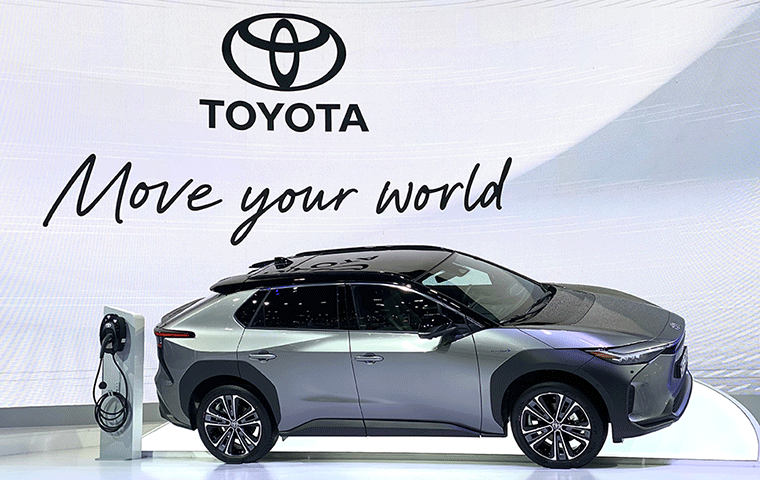Why the Honda–Nissan “Merger of the Century” Fell Apart
Related Articles
Why the Dream Deal Died in Just 54 Days
On December 23, 2024, a sweeping realignment plan shook Japan’s auto industry. Honda Motor Co. and Nissan Motor Co. signed a memorandum of understanding (MOU) to pursue a management integration via a joint holding company. Had it gone through, the “merger of the century” would have created a group with over ¥30 trillion in revenue, the world’s third-largest automaker—touted as a trump card for navigating the upheaval of EVs and autonomous driving. Yet no one then imagined that this grand vision would be wiped clean in a mere 54 days.
Tension was present from the outset. The plan initially aimed to present a direction by the end of January 2025, but that was soon pushed to mid-February—an early signal of difficult negotiations. Then came the sudden turn on February 5: multiple outlets reported that Honda had floated making Nissan a wholly owned subsidiary, overturning the premise of a merger of equals. Honda’s leadership judged a holding-company structure—with the two firms standing side by side—too slow for decision-making and incapable of executing fundamental reforms. Their conclusion: only a single-governance structure with strong leadership could ensure survival.
For Nissan, the proposal was impossible to accept. On February 6, Nissan CEO Makoto Uchida visited Honda headquarters and directly told Honda CEO Toshihiro Mibe that Nissan rejected the subsidiary plan. On February 13, the two companies formally announced the termination of the MOU. The giant alliance that was to be enshrined in Japan’s automotive history effectively ended in a collapse. At a later press conference, Uchida stated, “I couldn’t be confident that becoming a Honda subsidiary would draw out Nissan’s potential,” making it clear that maintaining autonomy was a nonnegotiable line.
This 54-day drama was more than a failed negotiation—it revealed how deeply both sides misread each other’s essence. Honda misjudged the weight of Nissan’s history and pride; Nissan underestimated Honda’s insistence that speed and absolute management control were prerequisites for success. From day one, each side sat down without grasping the other’s red lines, which were never destined to meet. Honda’s subsidiary proposal was not a rash move born of deadlock; it was a last-ditch strategic gambit after mistrust in Nissan’s reform speed peaked—an ultimatum of “full integration or parting ways” that pushed the relationship past the point of repair.
Oil and Water? A Cultural and Strategic Divide

Behind the breakdown in just 54 days lay not only strategic clashes exposed during talks, but also a fundamental gulf in corporate cultures—as incompatible as oil and water—that amplified mutual distrust and became an insurmountable wall.
Nissan, a pioneer manufacturing automobiles since before WWII, is often characterized as conservative. Its long history fostered organizational structures and traditions that, for better or worse, favor cautious decisions. That historical pride fueled strong internal resistance—“One of Japan’s oldest automakers becoming a Honda subsidiary sounds like a bad joke.”
Honda, by contrast, only entered four-wheeled vehicles in the 1960s and is seen as free-spirited and change-embracing. Its bias toward new challenges often translates into a speed-first management style willing to cut loose from the past.
These cultural differences surfaced as concrete strategic disputes. As talks progressed, Honda’s leadership grew frustrated with what it saw as slow decision-making at Nissan. In particular, Honda viewed Nissan’s restructuring plan—including 9,000 job cuts—as “not bold enough,” insisting on more radical, faster reforms. To Honda, Nissan lacked a crisis mindset; to Nissan, Honda looked condescending and arrogant. The rift only deepened.
Under the surface, issues stoking Honda’s distrust may have been even more serious. According to one industry source, Nissan’s governance was fragile, with highly confidential negotiations prone to leakage. A partnership of equals rests on absolute trust and confidentiality; if Honda judged that Nissan could not control critical information, it is no surprise Honda concluded that an equal integration posed unacceptable business risk. From that vantage, the subsidiary proposal was less hubris than a risk-control measure against governance shortcomings—a cold-eyed judgment that the project could succeed only if speed, strategy, and information control were all placed under Honda’s command.
Anxiety in the EV/Autonomous Era: The Wall of Massive Investment
Why would two culturally different firms even attempt such a difficult merger? Because the external environment is changing at breakneck speed. The auto industry is in the midst of a “once-in-a-century” transformation, buffeted by EVs, SDVs (software-defined vehicles), and autonomous driving. In this new arena, legacy advantages in engine technology mean little; winners are decided by huge upfront investment and new technical capabilities.
Newcomers like Tesla and China’s BYD are rising fast, threatening incumbents. In China, the world’s largest auto market and a leader in electrification, both Honda and Nissan have suffered slumping sales and profits. Japanese makers’ long-cultivated pride in engines became an anchor, contributing to a late shift to EVs.
Both CEOs—Honda’s Mibe and Nissan’s Uchida—shared a sense that “going it alone is tough.” Integration appeared the most rational option to pool R&D and manufacturing assets, dramatically reduce costs for EV core components and software, and secure the scale to confront both new challengers and Western giants.
In other words, the talks were defensive, less a bold strike at growth than a move for survival. The two titans essentially conceded that their individual scale and strategies might no longer suffice in 21st-century competition. Ironically, the integration born of crisis was shattered by internal barriers—corporate cultures and pride forged by past success. Strategic logic could not overcome organizational emotion and historical attachment. This episode epitomizes the innovator’s dilemma facing Japan’s auto industry: no matter how great the external threat, internal inertia blocks transformation.
After the Breakup: Each Sets Out on a “Thorny Path”

With the biggest option off the table, Honda and Nissan must now face fierce competition alone—a truly thorny path. Lacking the scale solution, both are forced into second-best strategies.
After the collapse, Nissan moved quickly to rework its alliance with Renault. In March 2025, Nissan and Renault announced revisions, easing cross-shareholding restrictions to create a more flexible capital relationship. Nissan is also reorganizing operations, including making its Indian production subsidiary a wholly owned Renault unit. These steps are aimed more at stabilizing a complex relationship than at bold new growth. Tellingly, Nissan scrapped plans to invest in Renault’s EV spinoff “Ampere,” signaling a search for greater independence at the core of its electrification strategy, even while keeping the alliance framework.
Honda, for its part, clearly course-corrected. At its “2025 Business Update” in May 2025, Honda announced a revision to its electrification strategy. Citing a global EV slowdown and charging-infrastructure hurdles, it lowered its 2030 EV sales-mix target and instead pivoted to significantly expand hybrids as the near-term mainstay. This is a pragmatic, defensive shift after losing the scale a merger might have delivered—and reassessing the risks of large EV investments solo.
In the end, both firms’ Plan B stands in stark contrast to the ambitious overhaul a merger might have achieved: it is necessarily more conservative and incremental. The breakup may have inflicted lasting damage. Beyond missing out on scale, the talks publicly exposed weaknesses and internal discord to the world. Honda’s hunger for scale and Nissan’s governance and decision-making slowness are now visible to rivals and prospective partners. The road ahead may be even steeper because of this very public failure. Partial collaborations in EVs or software may still be explored, but whether either company can survive this harsh era on its own remains an open question.



